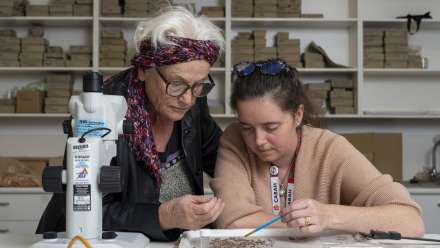Farmers add space tech to their toolboxes
The report focuses on three main components of space-based technologies that can help address agricultural challenges: remote sensing; connectivity and geolocation.
Australian primary producers may soon look to the skies with more than just an eye on the weather thanks to Australian National University (ANU) researchers who are helping farmers tap into rapidly emerging space-based technologies that have the potential to revolutionise the sector over the next decade, creating over $15.6b in additional gross value growth each year.
Martin Amidy, Senior Research Fellow at the Centre for Entrepreneurial Agri-Technology (CEAT)-a joint initiative between ANU and CSIRO-co-authored a report launched this year by AgriFutures Australia that explores new ways for rural producers to do business.
Space-based technologies - opportunities for the rural sector helps identify technologies and applications that are suited to the Australian context and has been prepared based on existing literature and workshops with industry, government and academia.
The report focuses on three main components of space-based technologies that can help address agricultural challenges: remote sensing; connectivity and geolocation.
Although all three of these components are in use in pockets across the sector, the report's authors argue that private companies' rapid deployment of satellites and new enabling technologies such as machine learning and the Internet of Things (IoT), and more accurate geolocation systems, can now bring cost-effective solutions within reach of those working in farming, fisheries and forestry sectors.
Among the scores of potential uses the researchers flag for space technology in agriculture are:
- Data fusion approaches integrating remote sensing satellite imagery with IoT field monitoring sensors to aid the application of precision agriculture solutions and reduce the time required for in-field scouting.
- enabling swarm robotics by fully automating tractor activities and replacing large tractors with a fleet of smaller autonomous platforms to maximise return on labour, reduce chemical inputs and reduce soil compaction
- GPS enabled animal tracking to monitor animal health and welfare in real-time, allowing producers to quickly identify livestock requiring management intervention.
With years of on-ground experience in the agricultural sector, Mr Amidy said he can see limitless applications for space technology in the industry however, solving new problems and tapping into opportunities means the industry needs access to more agriculturally literate computer scientists, engineers, designers and entrepreneurs.
Producers, technology companies and researchers are often unaware of avenues to work collaboratively to address agricultural challenges with space-based solutions, he said.
The forum and workshops CEAT facilitated with support from the ANU Institute for Space and the Institute for Water Futures, has demonstrated how the breadth of expertise across the ANU can be successfully brought to bear to provide interdisciplinary solutions to significant challenges facing industry.
To learn more about what CEAT can offer or to get in touch with Mr Amidy or other ANU researchers, contact kathryn.vukovljak@anu.edu.au.


